Horse armor, a royal tiara and the dethroned Italian monarchy
Also, is this a left-hand dagger I see before me?
This natural pearl and diamond tiara/necklace from the collection of the royal House of Savoy is one of the highlights of the Sotheby’s Geneva Magnificent Jewels and Noble Jewels: Part 1 auction on Tuesday (here’s Part 2 if you want to browse more big stuff). Dating to the second half of the 19th century, it belonged to Maria Vittoria dal Pozzo della Cisterna, who in 1867 married the Italian Prince Amedeo of Savoy, Duke of Aosta and later King of Spain.
Political unrest in Spain saw Amedeo take the throne in 1870 and then abdicate it in 1873. He and Maria headed back to Italy, but sadly, Maria died of tuberculosis a few years later at the age of 29. The couple had three sons, but it’s unclear which son may have inherited the tiara, and Sotheby’s speculates that King Umberto II of Italy “bought the jewel from one of his cousins to prevent this historic piece from leaving the family collection.”
The tiara, which has an estimate of $1-1.6 million dollars, is believed to have been made by Musy Padre e Figli, the court jeweler of Turin and one of the oldest goldsmiths in Europe (they’re still in business), with a history of working with the House of Savoy that dates back to the 1700s. The piece is composed of a series of graduated diamond-set scroll motifs that frame eleven slightly baroque drop-shaped natural pearls. The scroll section is mounted on a band of cluster and bar motifs set with cushion-shaped diamonds, and it detaches completely so it can be worn as a necklace. The band itself can also be attached to a ribbon and worn as a choker.
The House of Savoy still exists and is currently led by Vittorio Emanuele di Savoia, the only son of Umberto II (Italy’s last king) and his wife, Swiss former champion water skier Marina Ricolfi Doria. Vittorio is a real piece of work who’s been mixed up in murder (1978), corruption and prostitution (2006), and also punched his third cousin Amedeo, Duke of Aosta, twice in the face outside a 2004 event celebrating the wedding of Felipe, son of King Juan Carlos I of Spain. Amedeo, who has challenged Vittorio’s right to the top spot in the House of Savoy, fell backwards and was caught by Queen Anne-Marie of Greece.
The Savoys — who had supported Mussolini and the Fascists during the war — were officially exiled in 1946 when Italy became a republic, but they were allowed back in 2002 after Vittorio signed a document swearing loyalty to the Italian constitution and relinquishing any claim to the (defunct) throne.
Vittorio and Marina’s only son, Emanuele Filiberto, is the current heir to the House of Savoy, and has also set himself up as a reality tv star. In 2018 he floated the idea of starting a new royalist party in Italy to try to restore the monarchy………but I don’t think there’s much support for the idea, seeing as how this image1 of Vittorio, Marina and Emanuele spread like extremely gleeful wildfire on Italian Facebook in January/February 2020:
*SNORT*
Anyway, that’s tomorrow. Today, Christie’s Geneva is holding a Rare Watches auction, and it features a wealth of interesting items, including this circa 1690 German folding knife watch.
Made of gilt brass with elaborate scrolled engraving, the knife is fitted with a tiny miniature watch that is equipped with an elongated movement that was constructed to follow the shape of the case.
Christie’s labels it as a museum-worthy piece because few 17th century luxury novelties have survived to the present day, despite being popular in their time:
German watchmakers at this period were very inventive in the manufacture of such ‘toys’ to impress their wealthy patrons. Other known objects from the 17th century that are fitted with a timepiece are a watch fitted to a sword pommel, a powder flask and a hunting knife.
Miniature watches have always been a challenge for watchmakers, who have vied with one another to produce ever-smaller mechanisms.
The earliest known surviving example is a tiny gold and enamel clockwatch by an unknown German maker, circa 1610, which once belonged to Queen Elizabeth of Bohemia and was sold as part of the Harcourt Collection at Sotheby's London in 1992.
Also included in the auction is this delightful Vacheron Constantin table clock that depicts a polar bear made of carved cacholong (a type of opal) supporting an 18k gold and silver mystery clock. Diamonds and rubies adorn the hands of the clock and markers of diamonds and emeralds are placed at each quarter-hour on the lapis lazuli frame. The base is also made of lapis, and is highlighted with a ring of diamonds.
If you’re wondering how mystery clocks work — how can those hands just float there and move without being attached to a mechanism? — it’s done by attaching each hand to its own crystal disk. Each disk is individually rotated by cogs in the frame and controlled by a mechanism concealed in the base.
The clock was manufactured in 1989, and, according to Christie’s, only three were made. This is the only one of the three that depicts a polar bear; the other two clocks featured black bears and were made for and sold by the London jeweler Asprey.
These lovely earrings are included in the Jewelry and Watches auction at Freeman’s on May 19th, and feature graduated sizes of round brilliant-cut diamonds set within a crisscross pattern of black enamel. The drops are suspended from pavé-set diamond tops and are finished with rose-cut diamond terminals.
In the late Middle Ages and early Renaissance, left-hand or parrying daggers were used defensively, while a different weapon (usually a rapier) was held in the right hand. The late 17th century example above is Spanish, and it’s included in the Antique Arms and Armor auction at Bonhams London on May 26.
The dagger features elaborate engraving, including a foliage motif topped with three birds on the guard and an “IHS” christogram on the ricasso (the unsharpened part of the blade closest to the guard), so you can do all your stabbing with Jesus’ blessing. The ricasso is also pierced with two circular holes for sword-catching or -breaking, which seems to be common to Spanish daggers of the late 1600s.
Also, in case you’ve been looking for a full set of armor for yourself AND your horse:
The lot description says it’s in “German Late 16th Century Style,” so I don’t know when exactly it was made, but it wasn’t in the 16th century.
Which reminds me…. If you want to have some fun, do an image search for “William Tolliday castle.” Tolliday, born in 1915, was a jeweler and goldsmith who worked for the London court jeweler Garrard & Co. Beginning in the late 1960s, he specialized in creating tiny detailed castles out of precious metals, gemstones and minerals.
Each castle took months for Tolliday to produce, and they were highly sought after by collectors. He often based his designs on famous landmarks, and the one above is a depiction of the Chateau de Saumur from the illuminated manuscript Les Tres Riches Heures du Duc de Berry. It dates to July 1970 and features a white and yellow gold castle set atop an amethyst crystal geode, with a drawbridge spanning a gorge and a path leading down to the dragon's lair where St. George, in full armor, battles the dragon. A plaque at the base is engraved “St. George and the Dragon by William Tolliday.”
The piece is included in the Old Master Paintings, Silver & Russian Works of Art auction on May 19th at Doyle New York.
This isn’t my usual style, but I love this sterling silver and enamel “Op Art” bracelet by Hungarian-French artist Victor Vasarely. Vasarely (1906-1997) is known as the father of the 20th century Op Art movement, which used abstract geometric patterns to create optical illusions that produced the impression of movement, vibration, depth, hidden images, etc.
Vasarely branched out into jewelry during the 1980s and had a few pieces, including this “Jolie” edition, created through the Circle of Fine Art. The bracelet is numbered 46 out of 250 and dates to around 1985. It’s signed “Vasarely” and is included in the May 26th Jewels & Watches sale at Rago.
Remember last fall, when I told you guys about Daisy Makeig-Jones and the amazing “Fairyland Lustre” series she created for Wedgwood? Well, there’s a circa 1925 piece of it coming up for sale in the Collector: Live auction at Christie’s London on May 19, and I just wanted to point out the photo above, because it’s a fantastic visual of just how much work and detail went into those pieces. Look at those stars!
I should probably save this necklace for the Halloween edition because it’s kind of creeping me out, but at the same time I’m getting a real 1970s fantasy paperback vibe from it that I like. Hallmarked for 1979 by Finnish jeweler Lapponia, it features an asymmetrical design in 14k white and yellow gold that pairs a textured figural motif (that’s the professional way to say “sinister little high priest dude”) with a rectangular base and two gray cultured pearls. The pendant is suspended from a 14k bar link chain.
He’s reminding me of something/one, but it’s currently 3 am and my brain is a pile of ramen noodles. Is it something from a fantasy novel or movie? A joke dream sequence in a sitcom? It’s RIGHT. THERE. and I can’t grasp it. If you have any ideas, please reply or let me know in the comments!
Ok, that’s more than enough of my nonsense. Hopefully many of you have gotten your shots by now and can slowly, tentatively, start to turn your faces towards the sun. Hit reply if you would like to chat, and, as always, feel free to leave a comment or find me on Twitter at @rococopacetic. Have a good week, everybody! xxx
Thanks for reading, and if you haven’t already subscribed, sign up here:
Did I highlight that tiara just so I could include this meme? Absolutely.


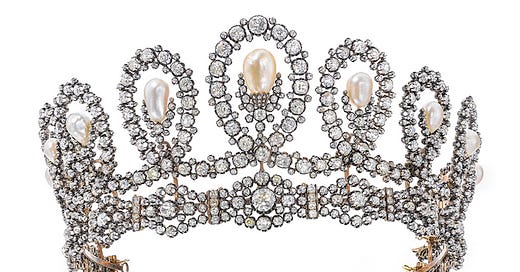


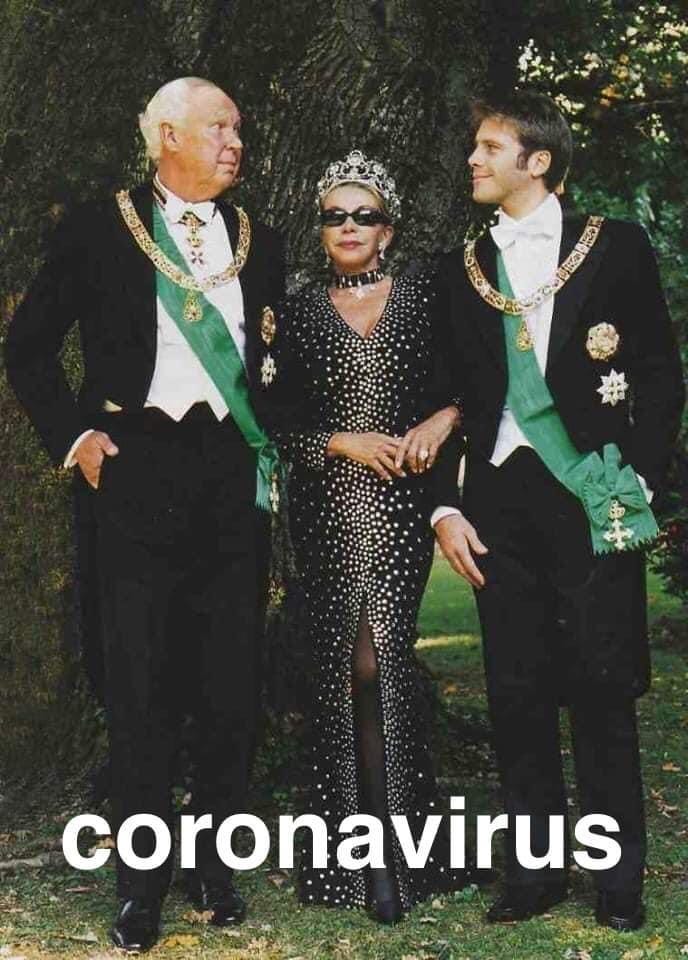
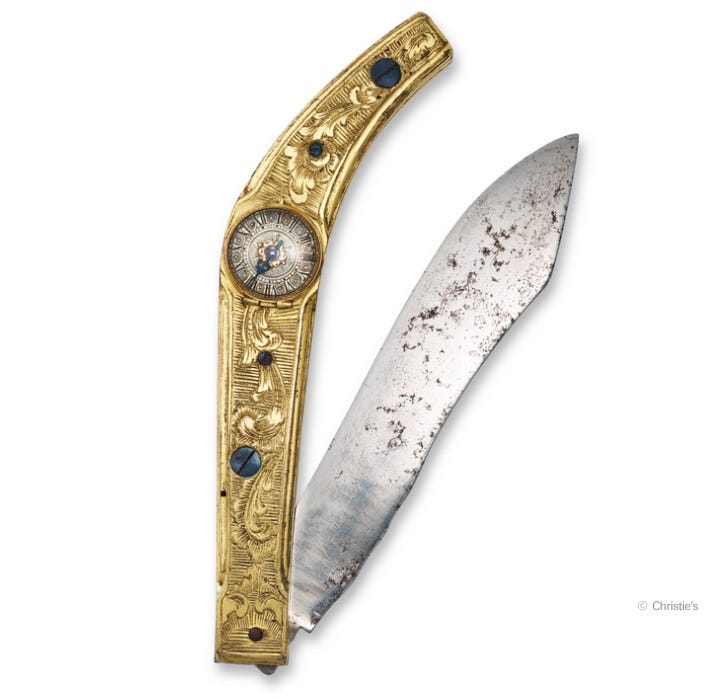
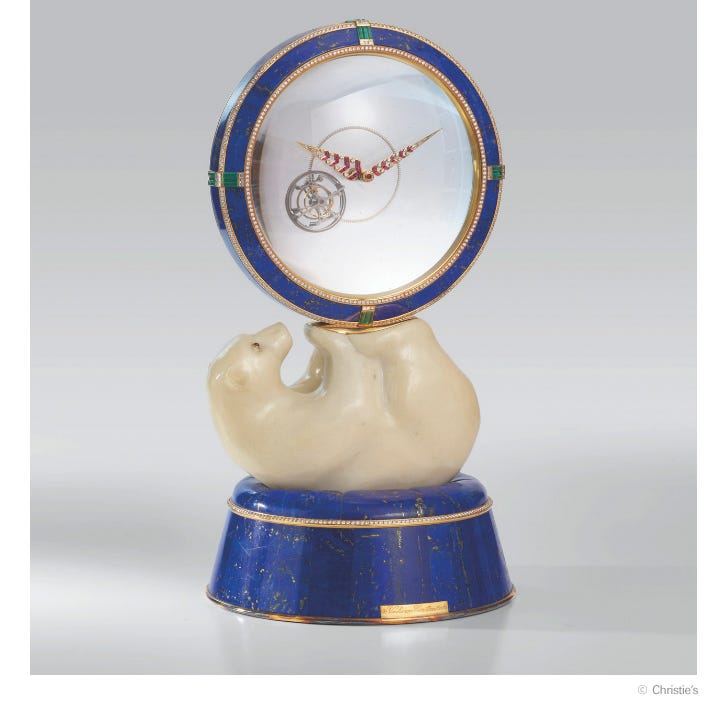
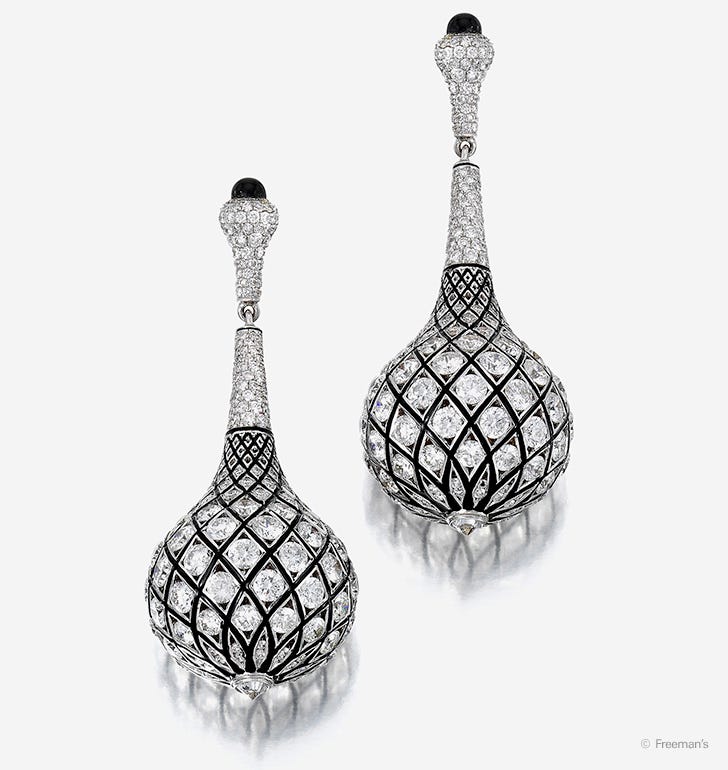
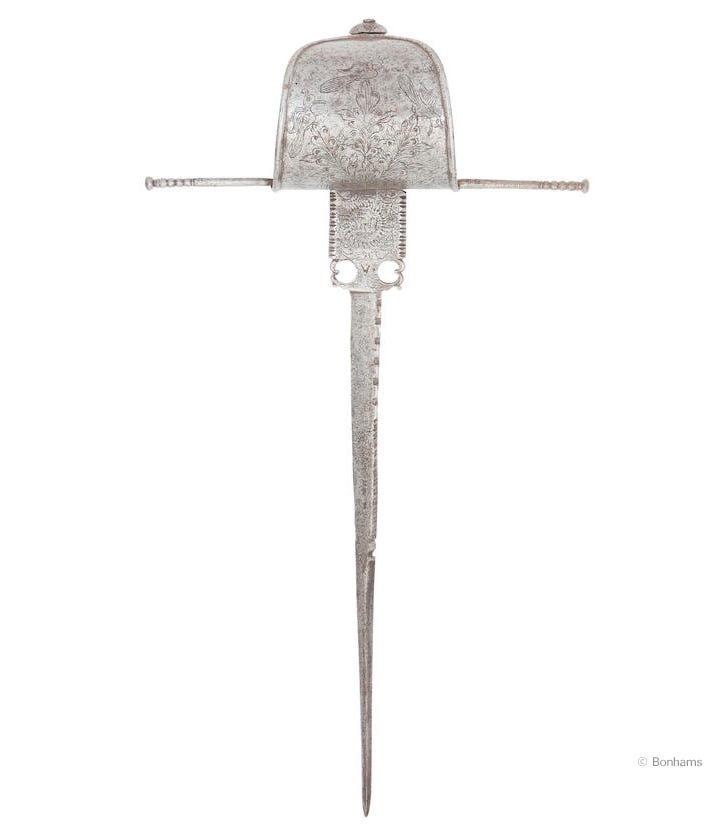
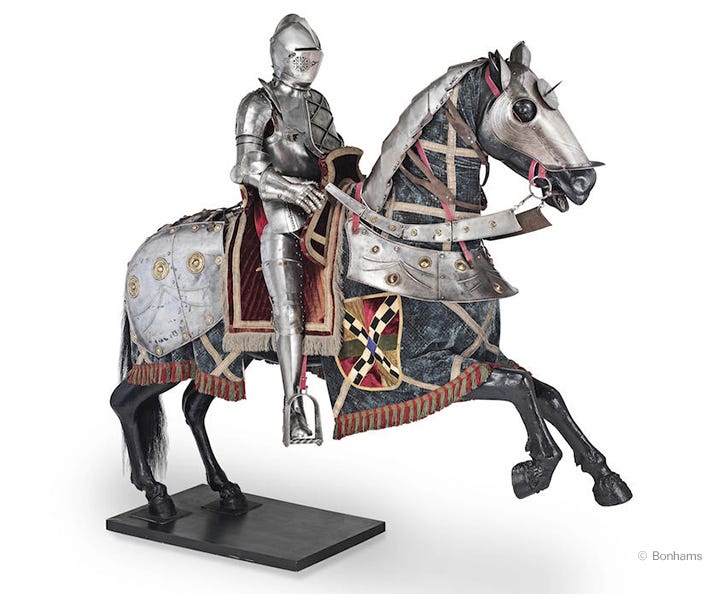
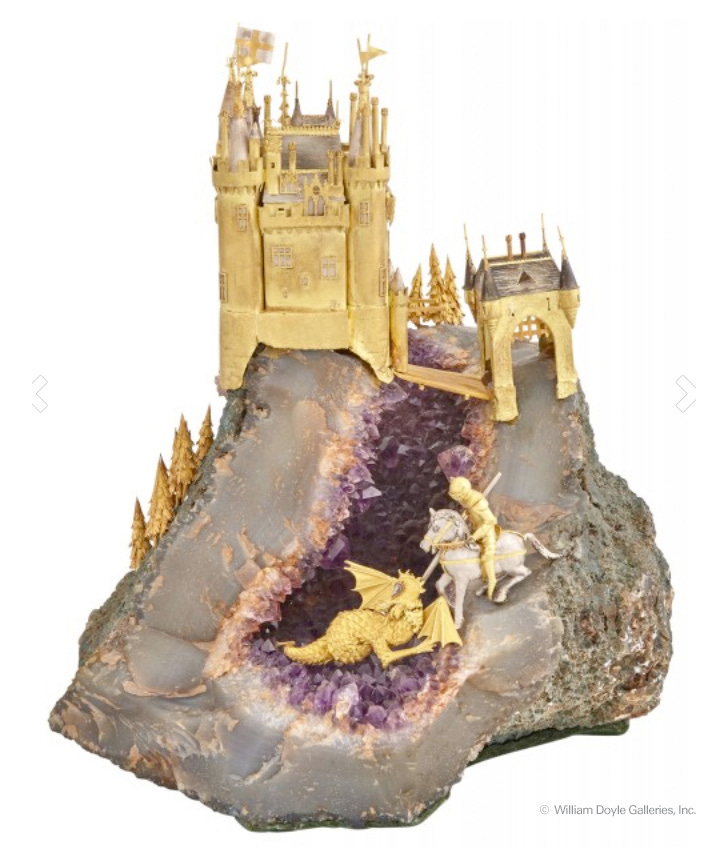
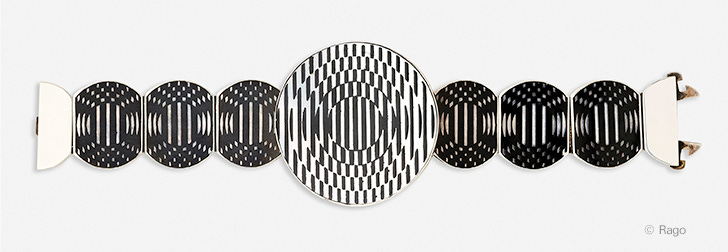
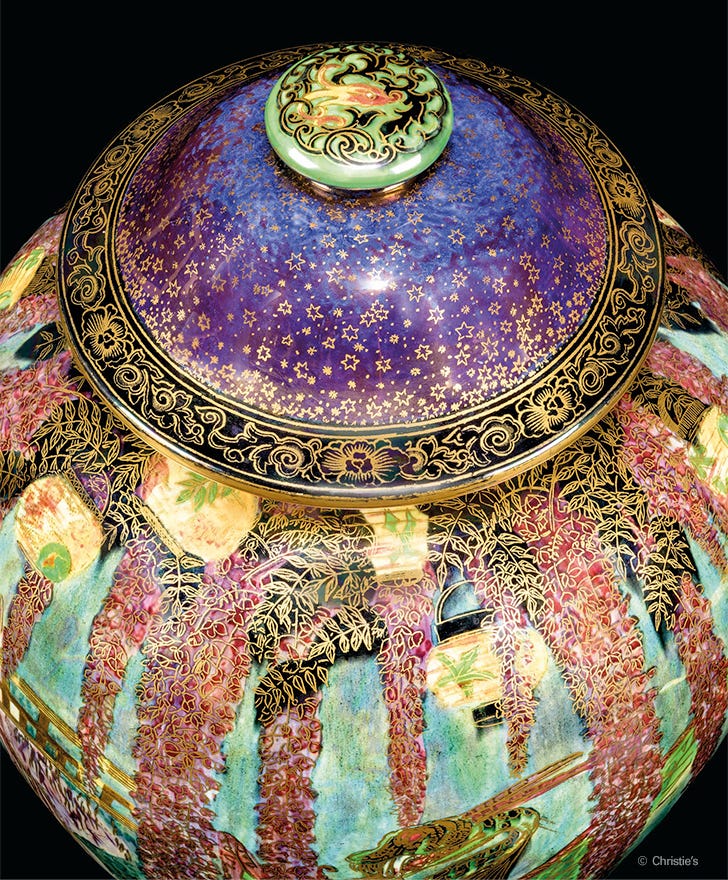
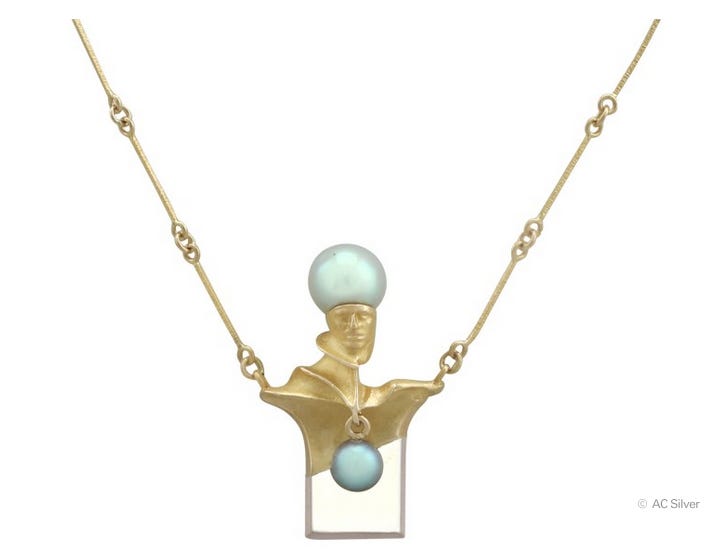
The necklace guy kind of looks like Paul Bettany to me.
The wannabe Italian kings were in the paper this weekend. The current pretender, passed his 'succession rights' onto his 16 year old granddaughter. She's an aspiring influencer